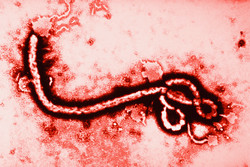New weapons against emerging RNA viruses
Major progress has been made in the fight against arguably the most prominent RNA virus emerging in the last century, AIDS. However, there are still no drugs or vaccines for many emerging or re-emerging RNA viruses. Increased human mobility and commercial transportation, climate change, urbanisation and increased population density have inadvertently created environments where these viruses can thrive. The SILVER(opens in new window) (Small-molecule inhibitor leads versus emerging and neglected RNA viruses) project has completed a major research initiative on screening for molecular inhibitors. The targets were the priority group A viruses and relatively neglected and or emerging group B viruses. Notably typical of SILVER's outstanding organisation, the unexpected emergence of the human MERS-coronavirus (MERS CoV) in Saudi Arabia initiated an immediate response from the SILVER steering committee. Consequently, the project's 'Outbreak Pipeline' was activated to organise investigation into this potentially highly pathogenic virus. Other viruses making the headlines during the duration of SILVER were the chikungunya and Ebola viruses. Cell culture-based screening of compound libraries and study of viral enzymes were a critical part of the pipeline. The focus on optimisation of hit-to-lead has intensified delivering several priority lead compounds for a wide range of RNA viruses. Toxicity studies were performed and in vivo models developed. Commencing with more than 700 000 cell-based assays, 700 promising hits emerged and 20 of those were tested for proof-of-concept. The researchers have identified and tested a very broad-spectrum inhibitor, T705. There is also progress on two series of inhibitors against dengue virus and a patent application is imminent. For MERS CoV, there are several promising hits, all from a library of FDA-approved compounds as a spin-off of previous work on the related SARS CoV. One licence agreement for an enterovirus inhibitor was signed with Novartis for clinical analysis and two more inhibitors are being considered for licencing. Seven patents have already been secured and up to 20 more may follow. About 165 peer-reviewed papers have been published and further meaningful dissemination has been achieved through conferences. Project reports and advice have been used by many health agencies. Discovery of safe and effective viral inhibitors will help to alleviate epidemic outbreaks that have an enormous social and economic cost.







